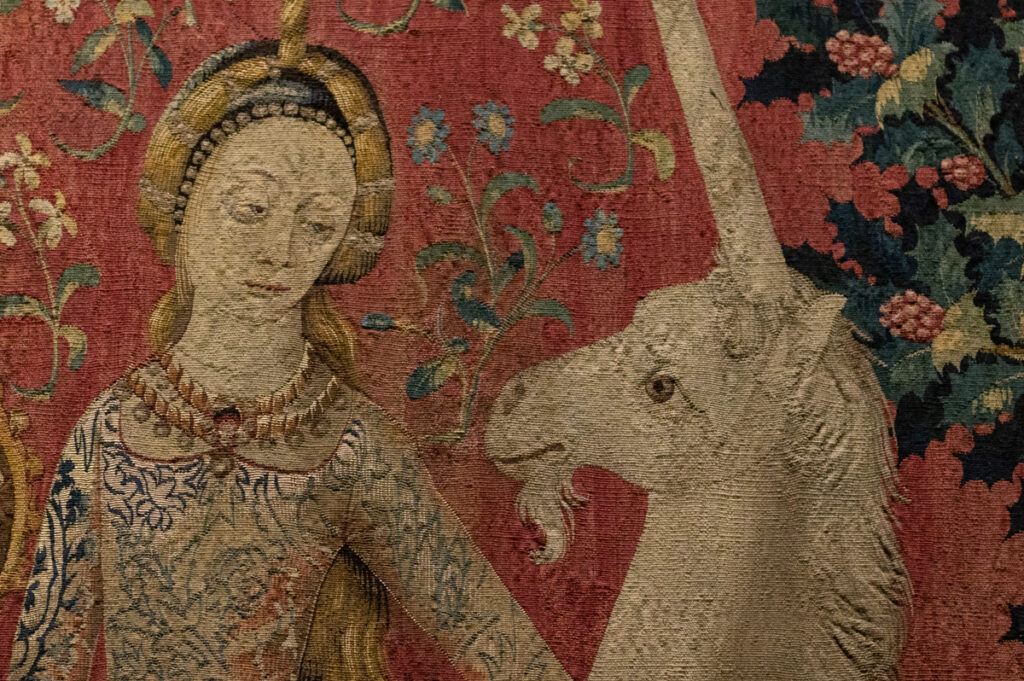
Oh, this animal that is not
They didn’t know it, and anyway
-from its gait, its posture, its nape,
to its shining silent gaze – they loved it.
Although it wasn’t. But because they loved it, it was
a pure animal. They always left room
and in this room, clearly outlined
it softly lifted its head, and barely needed to
be. They fed it no grain
always only the possibility to be
and that gave such strength to the animal
that from its forehead it drove a horn. A horn.
To a virgin it appeared in white
and it was in her silver mirror, and in her.
During his stay in Paris, from 1902 till 1914, the Austrian poet Rainer Maria Rilke frequently took the short walk to the Musée de Cluny in the Quartier Latin. The ancient cloister turned museum had recently acquired a set of six medieval wall carpets: colourful tapestries, woven from dyed silk and wool, which depicted a noble woman and her lady in waiting flanked by a lion and a unicorn in a flowery garden.
Little was known of the tapestries’ provenance. Given their high quality, their manufacture, a highly collaborative effort by various professions, must have commanded an outrageous price. Much more than Michelangelo was paid to paint the Sistine Chapel, and of course, much more than Leonardo Da Vinci got for his Mona Lisa (then and now at display at the Louvre) which was, as is commonly known, nothing. Nevertheless, La Dame à la Licorne (the Lady with the Unicorn) was soon dubbed the medieval Mona Lisa, as she was as beautiful and as puzzling as Leonardo’s. Transcending the ages, her gaze too is elusive so enigmatic as if, as Rilke has it, she had in advance erased all the words that could have captured her.
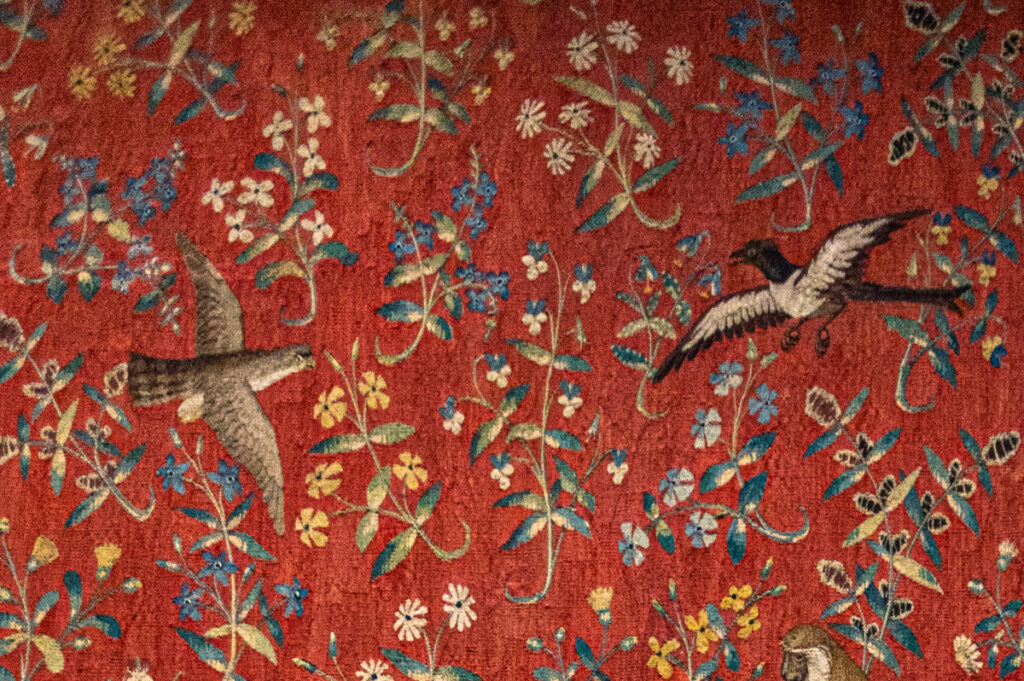
There is indeed something transcendental about the tapestries. Like messengers of an eternal spring the thousand flowers of their millefleur pattern – hyacinths, asters, columbines, jasmines, violets and veronicas and many more – never wither. Together with the frolicking birds and the secretive little creatures like rabbits, sheep, and puppies, they instill a celestial ease into the gloomy museum halls, as if the old, cold cloister were an eternal garden of Eden: softening the electric light, muting the city sounds that seep in through the windows. In this silky, woolen silence, Rilke must have felt respite from the unbearable, feverish chaos of the big city. When he arrived, 1902, Rilke hated Paris. He wrote home:
I want to tell you, dear Lou, … that I’m gripped with horror of everything that, like in an unspeakable confusion, is called life, and how alone I am in between these people, how perpetually neglected by everything I encounter. Cars run through me. Those in a rush make no detour, but stomp full of contempt over me, like skipping over a puddle of old water.
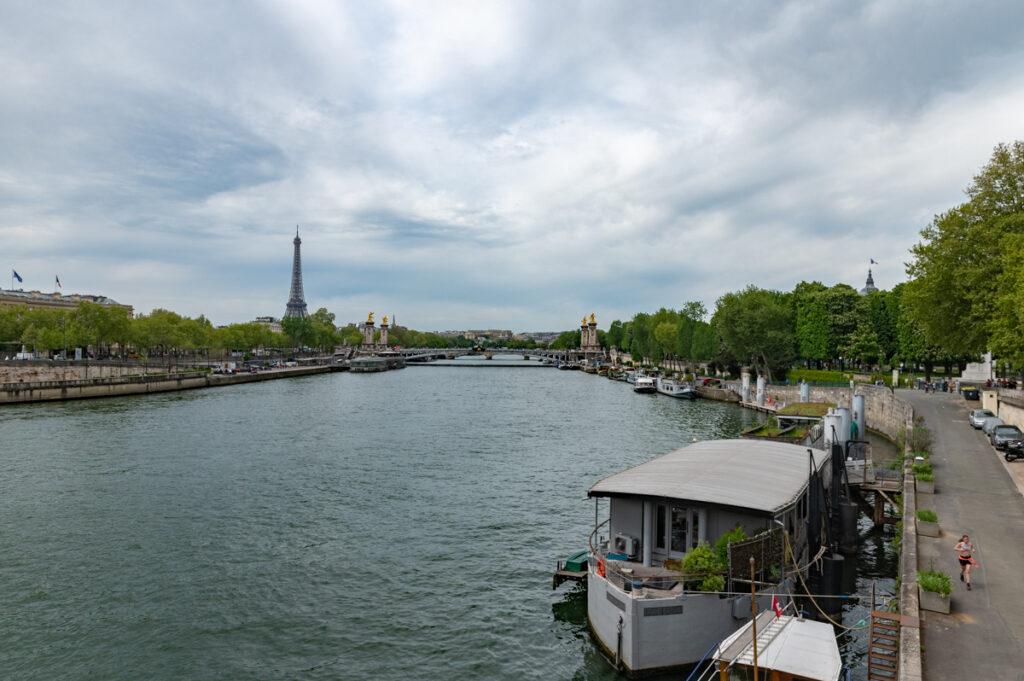
The turn of the century had ushered in a new age: modernity, the age of motorization, industrialization, and Paris was the capital of this brave new world: a bustling, pulsating metropolis. The world’s third-biggest city was the centre of science and art. The Eiffel Tower, a symbol of progress and linearity, had only recently been erected and now pierced a sky smudged with the blackish exhausts of machines and factories. The click-clack of horse-drawn carts was replaced by the stinking roar of the stuttering new motor cars. The rues and avenues were crowded with passers-by, passing anonymously, merely transients among transients, abandoned and left to themselves in their own fates, in Rilke’s words. The brimming hospitals, the filthy back lanes, the poverty and misery of the city plagued the pale, blue-eyed poet.
Oh, a thousand hands have constructed my fears, and my fears have grown from a far-flung village into a city, a big city, where the unspeakable happens…” he wrote to Lou. “I arrived last August, in the time when the trees wither without autumn, and the lanes glow, splayed from the infinite heat and one walks through the odours like through many sad rooms.
Rilke had spent the previous years in the sandy solitude of the North Sea coast. Now, he was overwhelmed by a life that, though recklessly driven, seemed to have lost its momentum, like a carousel that, turning faster and faster, appears to stand still. Life, mechanical, technical, anonymous, devoid of its sensuality, has become sense-less. Life lost in superficiality has become death itself.
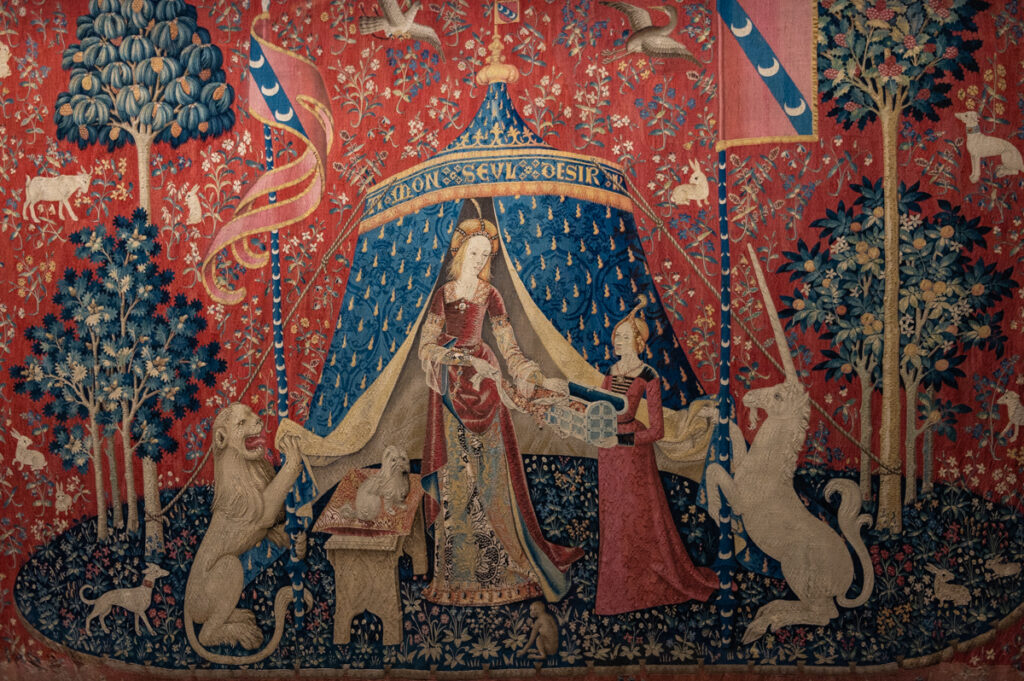
There is one way to read the “Lady with the Unicorn.” The five smaller tapestries depict the five senses: Taste. Smell. Touch. Sound. Vision. The sixth tapestry, the largest of the series, presents the sixth sense which crowns human existence. Mon Seul Désir, a heraldic banner above the Lady’s adorned head says. But what is this only desire, what this sixth sense? The Livre de Vraye Amour of 1503, a translation of Plato’s Symposion claims that the culmination of all five senses, the final and only object of human desire is beauty – the kind one cannot grasp with the senses: love.
“I’m learning to see,” says the protagonist of his only novel The Notebooks of Malte Laurids Brigge. Rilke wrote the book during his stay in Paris, no doubt to come to terms with the city, in his words, to make something of his fears. It is rather an anti-novel, written in the stream of consciousness technique ten years before Ulysses (James Joyce lived in Paris at the same time), and Mrs Dalloway (Virginia Woolf was an avid reader of Rilke). Malte Laurids Brigge, a young man newly arrived from Denmark, wanders through the streets of Paris, lonely and estranged. He, too, visits the Musée de Cluny and is smitten by the Lady with the Unicorn.
I am the impression yet to transform. Oh, it takes just a little to understand, to approve of it all. Only one step, and my misery would be bliss.
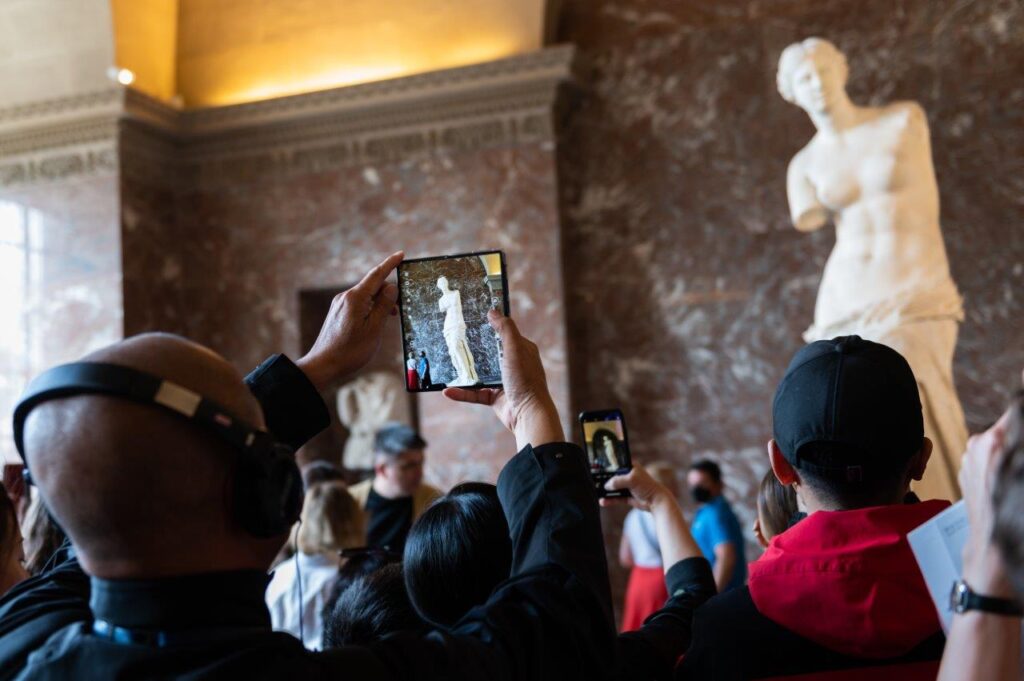
This is not purely an existentialist invitation to embrace the absurd – although Rilke anticipated much of the French existentialism that would bloom a few decades later in his old neighbourhood, the Quartier Latin. Learning to see meant to learn to take in: the German einsehen which means both to gain insight but also to understand, to empathize. In a way, Einsehen was his way of creating things of his fears, as he wrote to Lou. But it was also a technique that required him to become both the seer and the seen – Rilke and Brigge – at once. Looking at the headless torso of Apollo at the Louvre, Rilke writes:
…for here there is no place/that does not see you. You must change your life
However, blurring the lines between the outside and the inside came at a high cost for Rilke. Paris, the city that with its museums and art made him a poet, was also the backdrop of his existential crisis.
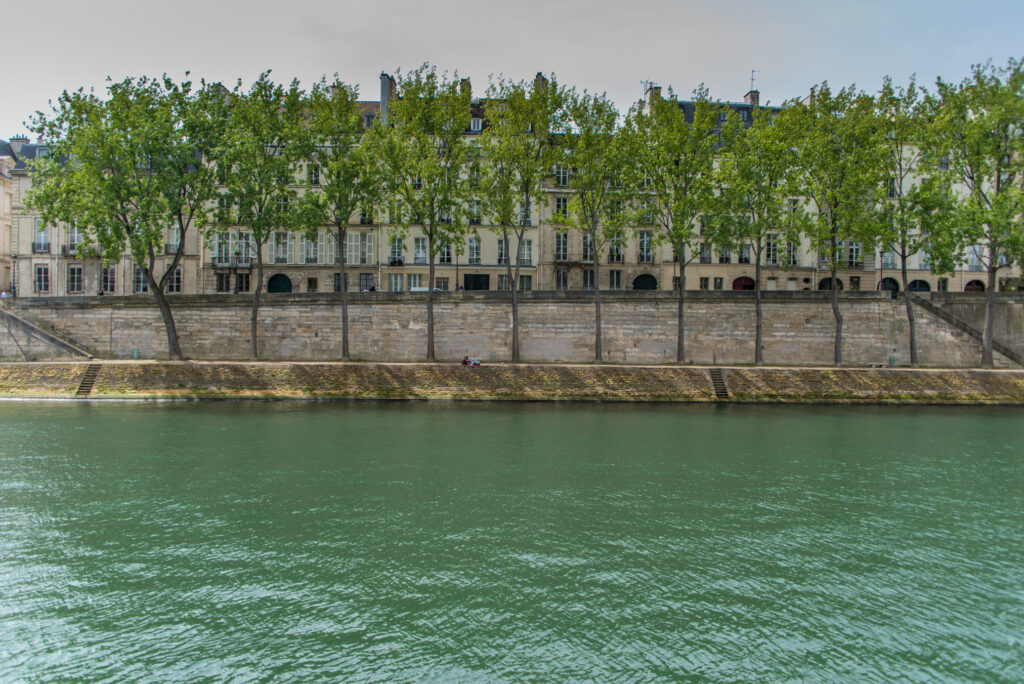
So then, this is where people come to live, I’d rather say, this is a place to die
This is the opening line of The Notebook of Malte Laurids Brigge. In the following pages Rilke gives a detailed account of Belle Epoque Paris, a term coined only decades later, no doubt in post-war nostalgia. To Rilke, the belle ville resembled a ship of fools: There is a man coming round the corner from the Champs Elysées carrying a crutch, there a woman pushing a barrel organ on a hand cart, there are the shop keepers in the rue the Seine, the man selling cauliflowers from a barrow of vegetables, there are the patients waiting at the psychiatric Hôpital de la Salpêtrière, the women feeding the birds, the man with St. Vitus Dance, the blind newspaper-seller. As Brigge observes the squalor and misery of the poor and sick, Rilke is terrorized that he might become one of them. He writes to Lou:
Oh Lou, I suffered, day after day. Because I understood that all these people, though I tried to evade them, couldn’t hide their secrets from me. They pulled me from myself into their lives, through all their lives, all their burdened lives.
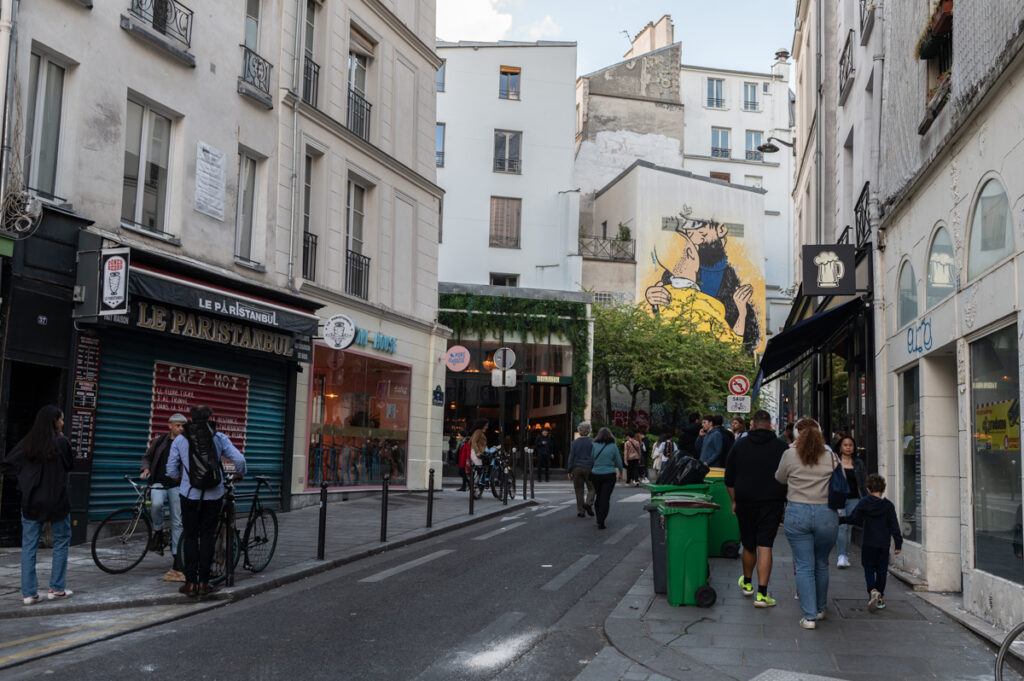
Lou was not his wife, nor the mother of his little daughter. Lou was his amour fou, the acclaimed writer and psychoanalyst Lou Andreas-Salomé. Once, Rilke had burned with love for her.
There is another way to read the Lady with the Unicorn. It is hard to oversee the sexual connotation of the erect horn in the presence of a young, beautiful woman. Some historians argue that the Lady with the Unicorn was but no more than a celebration of sensuality, of sex.
The unicorn was commonly known to be a wild creature bestowed with the magic ability to heal sickness and render poisoned water potable. Pure and white, like a virgin, it was also savage and untamed, with a phallic cone growing from its head. In its ambivalence the unicorn unified good and bad, male and female. First described by the Greek Physician Ctesias as pale and blue-eyed with a white horn, it was later mentioned by Aristoteles, Pliny the Elder, and Julius Caesar. It featured prominently in the Bible as well as on altar pieces, where it stood as a symbol for Jesus Christ. Only the council of Trent, held in the middle of 16th century – after the tapestries supposed weaving – banished the unicorn from the Bible, which of course didn’t stop it from roaming freely in the rest of the world.
The banishing – the capture and killing – of the unicorn was common in Europe until the late 16th century. Because of its healing powers unicorn horn was traded at exorbitant prices. Shakespeare gives a detailed description of the unicorn hunt in Timon of Athens. Leonardo da Vinci explains in his notebooks, how alternatively, the unicorn could be lured by means of a virgin: The unicorn, through its intemperance and not knowing how to control itself, for the love it bears to fair maidens forgets its ferocity and wildness; and laying aside all fear it will go up to a seated damsel and go to sleep in her lap, and thus the hunters take it. In other contemporary accounts, the virgin then trapped the unicorn in a silver mirror.
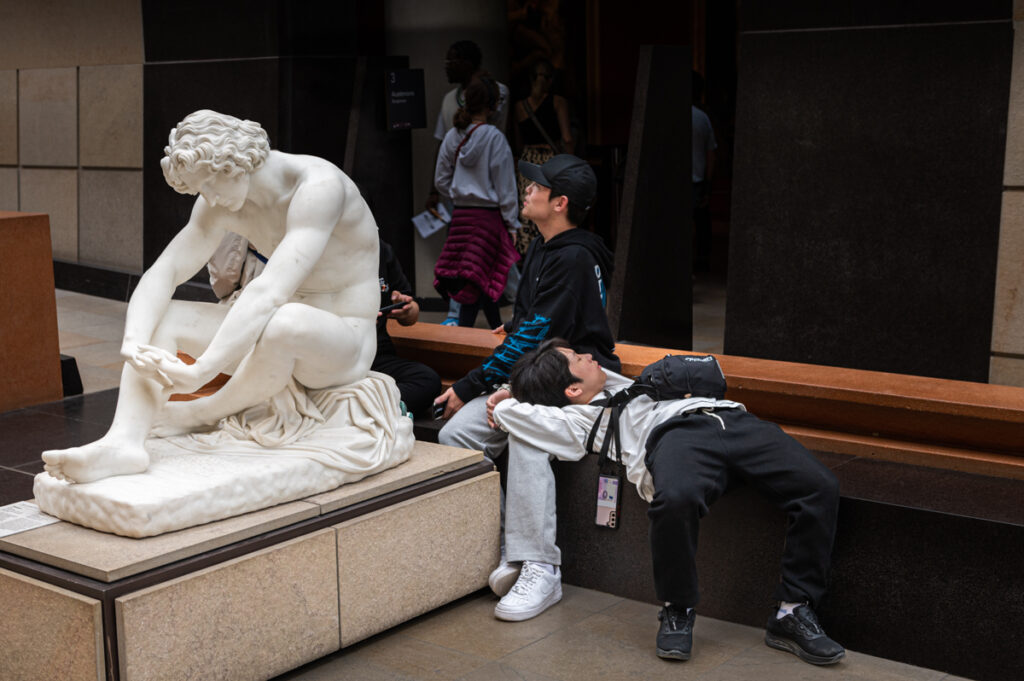
When Lou Andreas-Salomé met Rilke, she was, although sixteen years his senior and married, a virgin. The intellectual feminist had until then tried to pursue a strictly rational, intellectual life. But Rilke seduced her with his poetry, – or, as the lore goes – with one specific love poem, as haunting and overwhelming today as it must have sounded to her:
Extinguish my eyes: I can see you
slam my ears shut: I can hear you
and without feet I can walk towards you
and without a mouth I still beseech you.
Break off my arms, I will hold you
with my heart as a hand
strangle my heart, and my brain will beat
and if you throw my brain into the flames
I will carry you in my blood.
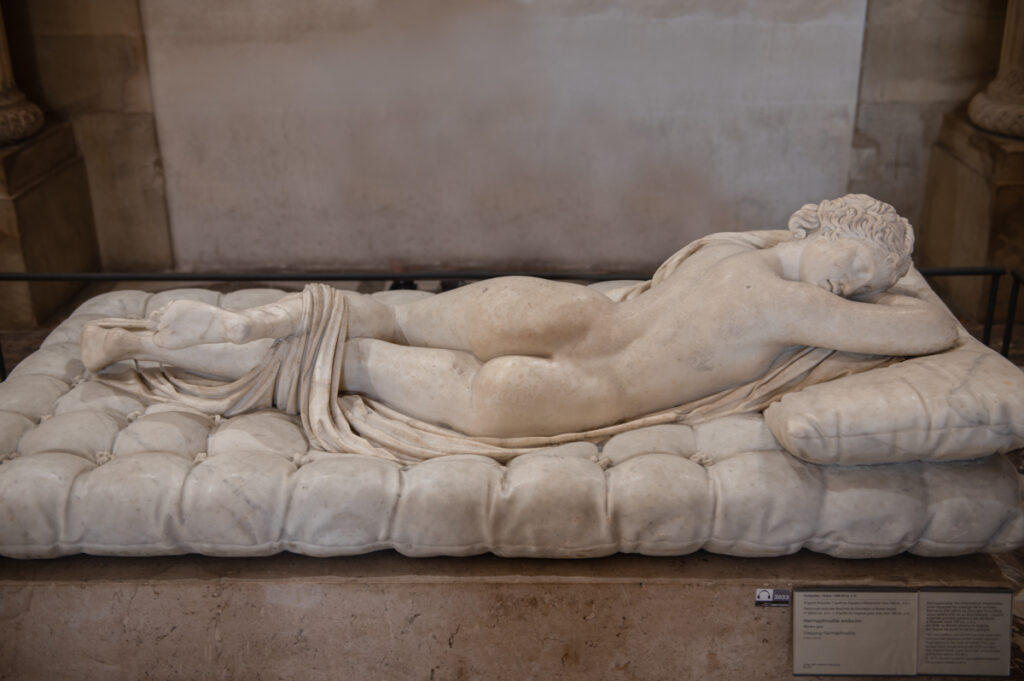
Lou Andreas-Salomé was not only Rilke’s lover. She was his inspiration, his editor, his soul-sister, his mother, his therapist, and, finally, she left him– which made his love burn the fiercer. It transcended the erotic and the romantic, until Lou was not his lover, but his be-loved. One cannot help but see Lou there by the unicorn. Or was he, Rilke, the Lady himself?
Rilke had spent the first years of his life as a girl, long-haired, in dresses with frills. As a fashion, this was not entirely uncommon in nineteenth century Prague, where he was born in 1875. But his mother really wanted him to be a girl, an ersatz daughter for a first-born child who had died young. She gave him a traditional girl’s name, René Maria, which Lou Salomé convinced him to change to the more masculine Rainer Maria. Of frail health and feminine physique, Rilke suffered during his years at the strict military school. In a poem dedicated to Lou Salomé he wrote:
A younger brother’s voice
I’m dripping away, I’m dripping away
like sand dripping through fingers
I have at once so many senses
that all are thirsty differently
I feel myself in hundred parts
swell and ache
But most of all right in my heart
I want to die. Leave me alone.
I believe, I will succeed
in being so scared
that my pulses will burst.
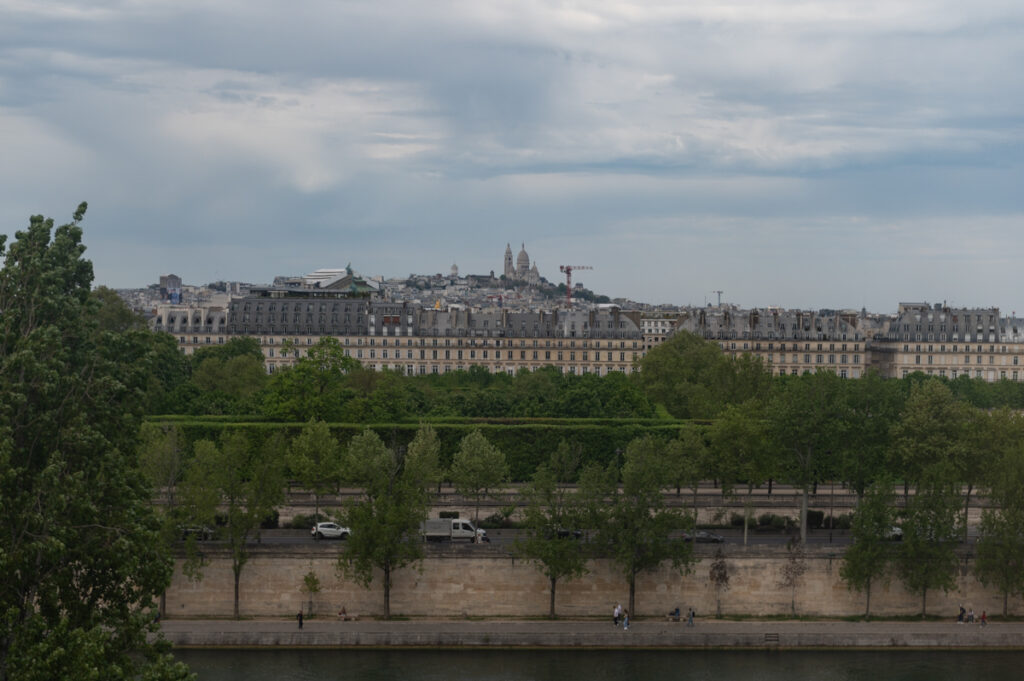
As much as he suffered from being the fille manquée to an unloving mother and an absent father, as an adult he struck his contemporaries as feminine and sexually ambiguous. Freud-disciple Lou Salomé diagnosed the hypochondriac with hysteria. In his writing, private and published, Rilke cultivated such profound love for the feminine, for womankind, that W.H. Auden dubbed him the greatest lesbian poet since Sappho. Stefan Zweig, who visited Rilke in Paris, later wrote in The World of Yesterday: Everything masculine caused him physical discomfort. In conversation, he was more at ease with women, and on paper he corresponded with women freely and frequently. He was freer in female company. In his “Letters to a Young poet,” which he sent from Paris to an aspiring (male) writer in Austria, Rilke wrote:
Women, in whom life lingers so much more fertile and faithful, must be the more mature humans – humans more human than man, who, light and superficial for lack of an unborn’s weight, hastily underestimates what he believes to love… one day there will be a woman, whose name will not anymore signify but the opposite to the masculine, but something in itself, something that won’t need completion or limitation, but will mean only life and existence: the female human…
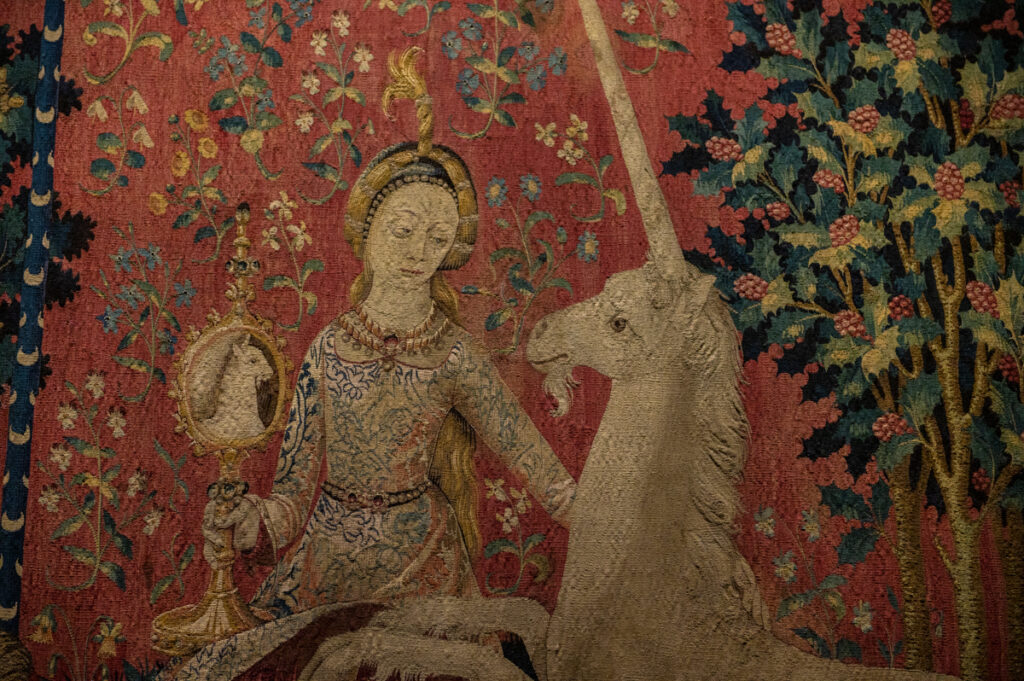
In the run of his life, Rilke had many love affairs, ranging from the madly erotic to the madly platonic. Yet, with the exception of Lou Salomé, to his lovers he remained distant, ungraspable, shrouded in an air of solitude. If his only desire was to love like a woman, he failed in life, but he succeeded on paper.
Rilke came back to the theme of the unicorn at various stages in his life. In addition to his musings in the Notebook of Malte Laurids Brigge, he wrote three more unicorn poems.
Choosing between the Lady and the unicorn, he might have settled for the mirror.
Lady with the Unicorn
Woman and noble: surely we hurt
A woman’s fate that we don’t understand
For you we are the still not mature
for your life, when we brush it,
turns into a unicorn, a shy white creature
that flees – and fears
and dissolves, disappears
and after much sadness you’ll find it
still scared, warm, and out of breath
then you remain apart, far from us
pass your hands through every day’s chores
the things humbly serve you
but you have just one wish fulfilled
that once a unicorn will find its calming face
in your soul’s heavy mirror.
